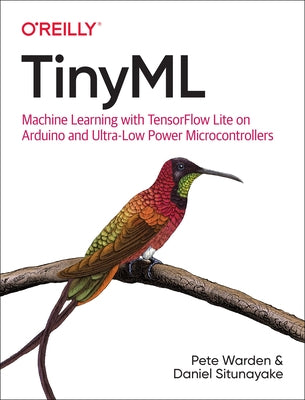Description
Deep learning networks are getting smaller. Much smaller. The Google Assistant team can detect words with a model just 14 kilobytes in size--small enough to run on a microcontroller. With this practical book you'll enter the field of TinyML, where deep learning and embedded systems combine to make astounding things possible with tiny devices.
Pete Warden and Daniel Situnayake explain how you can train models small enough to fit into any environment. Ideal for software and hardware developers who want to build embedded systems using machine learning, this guide walks you through creating a series of TinyML projects, step-by-step. No machine learning or microcontroller experience is necessary.
- Build a speech recognizer, a camera that detects people, and a magic wand that responds to gestures
- Work with Arduino and ultra-low-power microcontrollers
- Learn the essentials of ML and how to train your own models
- Train models to understand audio, image, and accelerometer data
- Explore TensorFlow Lite for Microcontrollers, Google's toolkit for TinyML
- Debug applications and provide safeguards for privacy and security
- Optimize latency, energy usage, and model and binary size
Author: Pete Warden, Daniel Situnayake
Publisher: O'Reilly Media
Published: 01/07/2020
Pages: 504
Binding Type: Paperback
Weight: 1.75lbs
Size: 9.17h x 7.01w x 1.01d
ISBN13: 9781492052043
ISBN10: 1492052043
BISAC Categories:
- Computers | Embedded Computer Systems
- Computers | Image Processing
- Computers | Artificial Intelligence | Computer Vision & Pattern Recognit
About the Author
Pete Warden is technical lead for mobile and embedded TensorFlow. He was CTO and founder of Jetpac, which was acquired by Google in 2014, and previously worked at Apple. He was a founding member of the TensorFlow team, and blogs about practical deep learning at https: //petewarden.com.
Daniel Situnayake leads developer advocacy for TensorFlow Lite at Google. He co-founded Tiny Farms, the first US company using automation to produce insect protein at industrial scale. He began his career lecturing in automatic identification and data capture at Birmingham City University.

